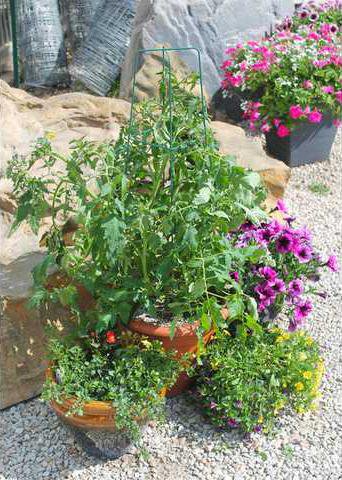With high hopes that the area has seen the end of frost for the year, a full-house turned out to learn the how-tos of container gardening at the Great Bend Rec activity center Thursday.
Raised beds and container gardens offer many benefits over traditional gardening for those short on space. First, better production can be achieved because the plants can be grown in ideal conditions. It’s also less strenuous, with less weeding required and less ground to cover.
“Anybody can do this kind of gardening,” said Alicia Boor, Barton County Extension Ag agent. She stressed the importance of good soil in successful small space gardening. In container gardening, every inch counts, she said. Unamended garden soil should be avoided. Instead, use enriched potting soil, or order a soil test from the Extension service, she advised. By informing the agent what plants you intend to grow in the space, recommendations for amendments can be dialed in to ensure the best possible outcome. One other possibility is to create your own soil mix at home. Three ingredients are required: equal parts sandy loam, peat moss and builders sand provides a light, well draining mix.
Fertilizer will be necessary too, because with more plants growing closer together, nutrients are taken up faster than they can be replenished in nature. Boor recommends choosing either a timed release fertilizer, which can be applied once every few months, or a liquid fertilizer, applied at every other watering.
“Be sure to apply liquid fertilizer at 1/4 the recommended rate at every other watering to reduce the chance of burning plants,” she said.
Vegetables can grow in pots and small spaces, and is a trend that has been gaining in popularity. Vining varieties, like peas, beans, smaller squashes and melons can be grown on a trellis attached to the side of a bed or in a pot. Then lower growing varieties of greens and root crops can be added for variety. Larger plants like tomatoes may require more sturdy supports.
“Make sure you can drive the stake well into the ground or the pot to protect it from the strong Kansas winds,” Boor said. “When a plant like a tomato grows to full size, it can be like a sail. Too weak of a support can result in it tipping over.”
If a big bed of flowers is no longer practical, you don’t have to give up pleasing bursts of color. Containers are the perfect answer, she said. A flower garden can be as simple as a pot of petunias, or a more complex mix of plants. Boor offered some design advice she received from a master gardener.
“There are three things you need: a thriller, a filler and a spiller,” she said. She displayed several slides of floral combinations and provided the group with web resources and diagrams of possible floral arrangements. She also provided lists of vegetables and flowers suitable for small space gardening.
Placement and proximity to water was another point Boor touched on. She advised raised beds be placed not only in a sunny location, but also close to a water source to make sure they could be taken care of easily. Container gardens, too, should be placed where it is easy to care for them. Smaller pots, or pots on casters can also be moved to shady and protected areas easily.
“That’s great, especially when you have several frosts a month past the frost date, as we’ve had this year,” she said.
Salad days
Containers offer bounty of veggies, flowers, with minimal work





